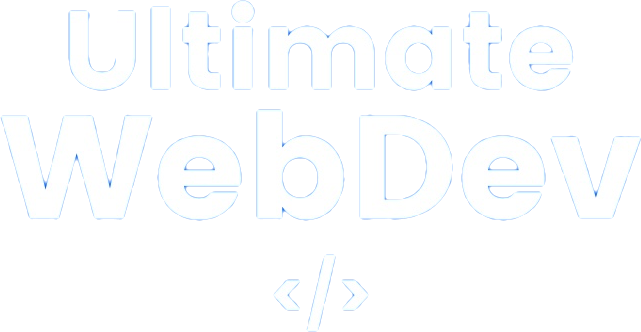jQuery Selectors
jQuery selectors are a fundamental aspect of web development, enabling you to target and manipulate HTML elements with precision and ease. Whether you want to update the content of specific elements, apply styles to a group of elements, or respond to user interactions, jQuery selectors provide a powerful mechanism for selecting and working with DOM (Document Object Model) elements.
Purpose of jQuery Selectors
jQuery selectors serve the primary purpose of identifying and selecting one or more HTML elements within a web page. Once selected, these elements can be manipulated, modified, or interacted with using jQuery methods and functions. Selectors are the key to achieving targeted and dynamic interactions in web development, allowing you to:
Access Elements: Selectors enable you to access specific DOM elements, such as headings, paragraphs, buttons, or form inputs, so you can work with them in your JavaScript code.
Modify Content: You can change the content, attributes, or styles of selected elements to dynamically update the web page based on user actions or other events.
Apply Styling: Selectors facilitate the application of CSS styles to elements, allowing you to control the visual presentation of your web page.
Handle Events: Event handlers can be attached to selected elements to respond to user interactions like clicks, mouse movements, and keyboard input.
Filter and Traverse: jQuery selectors offer powerful filtering and traversal options, enabling you to narrow down selections and navigate the DOM tree efficiently.
Basic Syntax of jQuery Selectors
The basic syntax of jQuery selectors is straightforward. To select one or more elements, you use the $() function (or jQuery() function) with a selector expression enclosed in parentheses. The selected elements are returned as a jQuery object, which allows you to perform various operations on them.
$(selector)
selector: A string containing the selector expression that specifies the elements to select.
Here’s a simple example that selects all the paragraphs (<p>) in a web page:
$("p")
In this example, $("p") selects all paragraph elements in the DOM and returns them as a jQuery object.
Common Types of jQuery Selectors
jQuery provides a wide range of selectors to cater to different scenarios and element selection needs. Below are some of the most commonly used types of jQuery selectors:
Element Selectors
Element selectors target HTML elements based on their tag names. They are straightforward and allow you to select all elements of a particular type.
- Tag Selector: Selects all elements with a specified tag name. For example,
$("p")selects all<p>elements.
$("p") // Selects all paragraphs
ID and Class Selectors
ID and class selectors target elements based on their id or class attributes.
- ID Selector: Selects a single element with a specific
idattribute value. Theidshould be unique on the page.
$("#my-element") // Selects the element with id="my-element"
- Class Selector: Selects one or more elements with a specific
classattribute value. Multiple elements can share the same class.
$(".my-class") // Selects all elements with class="my-class"
Attribute Selectors
Attribute selectors allow you to select elements based on their attributes and attribute values.
- Attribute Equals Selector: Selects elements with a specific attribute and value.
$("[name='email']") // Selects elements with name="email"
- Attribute Starts With Selector: Selects elements where the attribute value starts with a specified string.
$("[class^='btn']") // Selects elements with class starting with "btn"
- Attribute Ends With Selector: Selects elements where the attribute value ends with a specified string.
$("[href$='.pdf']") // Selects elements with href ending in ".pdf"
- Attribute Contains Selector: Selects elements where the attribute value contains a specified substring.
$("[title*='jQuery']") // Selects elements with title containing "jQuery"
Combination Selectors
Combination selectors allow you to combine multiple selectors to target elements based on various criteria.
- Multiple Selector: Combines multiple selectors into a single selection. It selects elements that match any of the specified selectors.
$("h1, h2, h3") // Selects all <h1>, <h2>, and <h3> elements
- Descendant Selector: Selects elements that are descendants of a specified parent element.
$("div p") // Selects all <p> elements inside <div> elements
- Child Selector: Selects elements that are direct children of a specified parent element.
$("ul > li") // Selects all <li> elements that are direct children of <ul> elements
Filter Selectors
Filter selectors allow you to refine your selections by applying filters to the matched elements.
- First Selector: Selects the first matched element.
$("p:first") // Selects the first <p> element
- Last Selector: Selects the last matched element.
$("p:last") // Selects the last <p> element
- Even Selector: Selects elements with even index positions among the matched elements (0-based index).
$("li:even") // Selects even-indexed <li> elements
- Odd Selector: Selects elements with odd index positions among the matched elements (0-based index).
$("li:odd") // Selects odd-indexed <li> elements
Form Selectors
Form selectors target form elements, making it easy to select and manipulate form controls.
- Input Selector: Selects all input elements, including text fields, checkboxes, radio buttons, and more.
$(":input") // Selects all input elements
- Checkbox Selector: Selects all checkbox input elements.
$(":checkbox") // Selects all checkbox input elements
- Submit Selector: Selects all submit button input elements.
$(":submit") // Selects all submit button input elements
Practical Examples of jQuery Selectors
Let’s explore practical examples of jQuery selectors to understand how they can be used in real-world scenarios.
Example 1: Changing Text Content
You can use a simple element selector to change the text content of specific elements. Suppose you have multiple paragraphs, and you want to change the text of the second paragraph.
$("p:eq(1)").text("This is the updated text.");
In this example, $("p:eq(1)") selects the second <p> element (remember, indices are 0-based), and .text() is used to change its text content.
Example 2: Styling Elements
You can apply CSS styles to selected elements using class selectors. Suppose you have a button with the class “btn” and you want to change its background color to blue.
$(".btn").css("background-color", "blue");
Here, $(".btn") selects all elements with the class “btn,” and .css() is used to modify the background color.
Example 3: Handling Click Events
To handle click events on specific elements, you can use element or ID selectors. Let’s say you want to display an alert when a button with the ID “my-button” is clicked.
$("#my-button").click(function() {
alert("Button clicked!");
});
In this case, $("#my-button") selects the button with the specified ID, and .click() attaches a click event handler to it.
jQuery selectors are essential tools for web developers, enabling precise targeting and manipulation of HTML elements within a web page. By understanding the purpose, syntax, and various types of selectors available, you can streamline your web development efforts, create dynamic user interfaces, and enhance the interactivity and responsiveness of your web applications. Whether you’re updating content, applying styles, handling events, or filtering elements, jQuery selectors provide a versatile and efficient means to achieve your web development goals.

